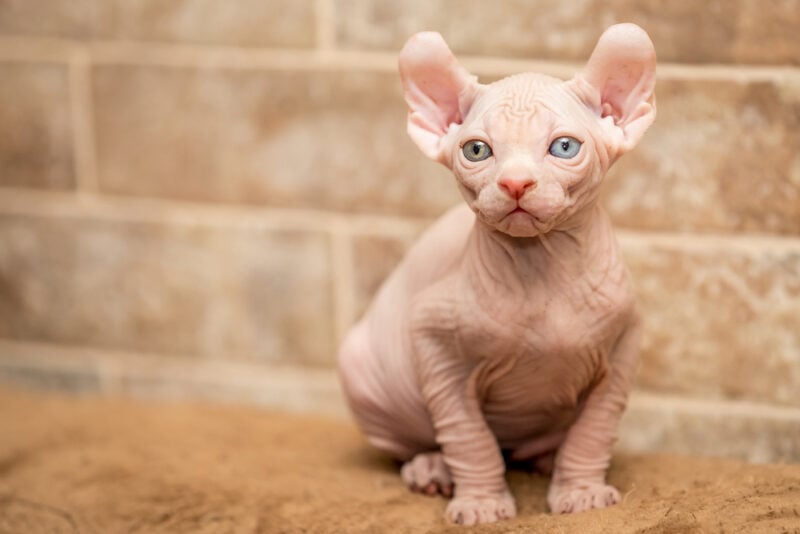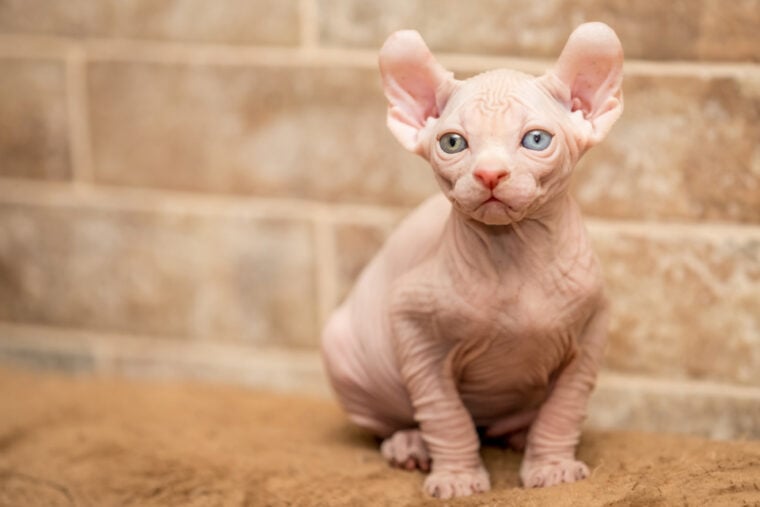- February 25, 2024
Is There No Such Thing as a Truly Hypoallergenic Cat? Vet-Approved Truth Unveiled



The information is current and up-to-date in accordance with the latest veterinarian research.
In the United States, millions of people suffer from pet allergies, and more are diagnosed each year. While dogs and cats can trigger allergic reactions, cat allergies are about twice as common as dog allergies 1. Unfortunately for feline fans with allergies, there’s no such thing as a truly hypoallergenic cat.
However, those with cat allergies aren’t necessarily doomed to a life without a purring pet. In this article, we’ll discuss why there’s no truly hypoallergenic cat and list some breeds that allergy sufferers may tolerate better. We’ll also give you tips to reduce the allergens in your home and help you tolerate your pet better.
Why No Cat Is Truly Hypoallergenic
One of the most common misconceptions about cat (and dog) allergies is that they’re triggered by pet hair. If that were the case, we would expect low-shedding or hairless cats to be hypoallergenic.
However, the primary cause of cat allergies is a protein on their skin and saliva. Allergens build up on the cat’s fur as the kitty grooms itself, which is why shed fur can trigger an allergic reaction. Even hairless cats possess this protein on their skin and can collect more as they clean themselves.
In addition to this protein, cats have at least seven others that can trigger allergies. Every cat produces different amounts of these proteins, but they all have at least one, which is why there is no truly hypoallergenic cat.

Which Breeds Are Best for Allergy Sufferers?
Individual cats produce varying types and amounts of allergens, so not every kitty triggers the same reaction in a person with allergies. While there’s no way to predict precisely which cat will make you sneeze, the following breeds are often better tolerated by those with allergies:
Again, the severity of an allergic reaction depends not only on the cat’s level of allergens but also on your immune system.

Tips to Help Reduce Cat Allergens at Home
Since there’s no such thing as a truly hypoallergenic cat, cat lovers with allergies must adopt other strategies if they want to live comfortably with a kitty.
You can spay or neuter your cat since it can reduce the number of allergens the cat produces. Bathing your cat frequently, once a week, also significantly decreases the allergens present on their skin and coat. One reason that allergy sufferers better tolerate Sphynx cats is that their skin gets wiped so frequently.
At home, keep at least one room, such as your bedroom, cat-free to give your immune system a break. Use home air filters designed to trap allergens, or consider a portable air filter for specific rooms. Vacuum frequently, ideally with a machine that contains a filter.
If you’re the person at home with cat allergies, avoid doing the cleaning yourself or wear a mask. Sweeping and dusting should also be limited, as these cleaning techniques tend to stir up allergens more than remove them.
Finally, speak to your doctor about options for allergy shots or medications. Despite your best efforts, it may not be possible for those with severe cat allergies to keep a cat. However, these tips can help you give it your best shot first.

Conclusion
If you have cat allergies and are considering adding one to your house, try to spend time around the cat you wish to adopt first to see how your immune system reacts. As we covered in this article, there’s no guarantee of how any cat will make you feel until you’re exposed to them. If you find that you or an allergic family member cannot live with a cat, consider trying to re-home them with a friend or relative before contacting a rescue group or animal shelter.
Featured Image Credit: Lisitskiyfoto, Shutterstock
Tags
What do you think?
Related Articles

New Puppy Checklist: Gear You’ll Need for Your New Dog
Getting a new puppy is really exciting, but before you welcome them home, it’s important to prepare your space for them. Since puppies need a

How Big Do Mini Poodles Get? Vet Reviewed Average Weight & Growth Chart – Dogster
The information is current and up-to-date in accordance with the latest veterinarian research. Learn more » When you buy a Miniature Poodle, you might not

Can Police Dogs Smell Nicotine? Vet Verified Facts & Info – Dogster
The information is current and up-to-date in accordance with the latest veterinarian research. Learn more » While cigarette sales have been declining steadily for decades,

How Old Is 5 in Dog Years? Vet-Approved Guide to Each Size of Dog – Dogster
The information is current and up-to-date in accordance with the latest veterinarian research. Learn more » A common method for calculating a dog’s age is


